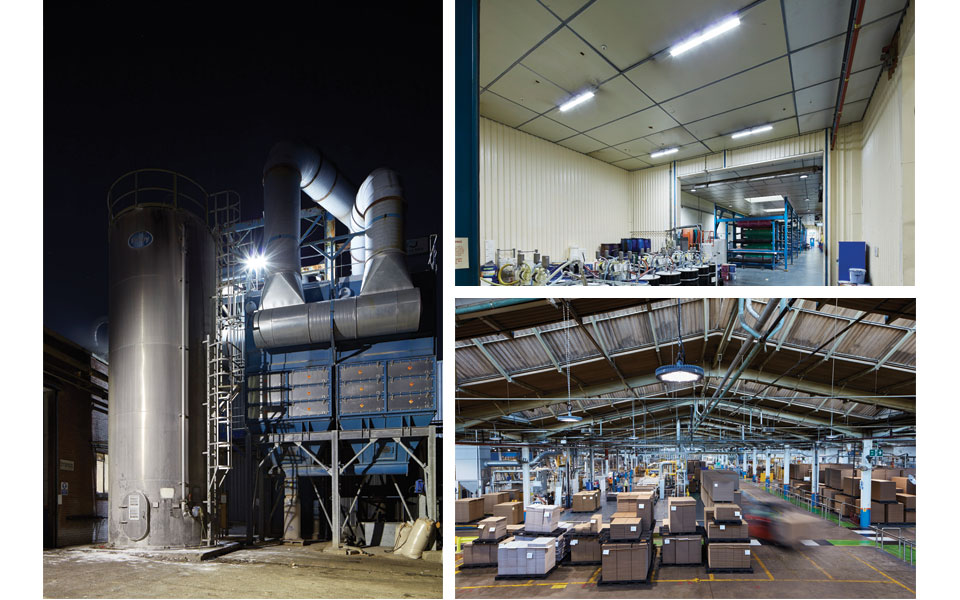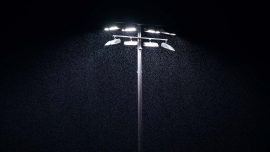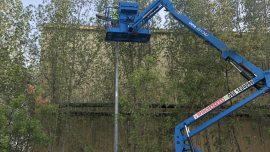
LED explosion-proof light
LED explosion-proof lamp is a kind of explosion-proof lamp. Its principle is the same as that of the explosion-proof lamp, except that the light source is an LED light source, which refers to various specific measures adopted to prevent the ignition of surrounding explosive mixtures such as explosive gas environment, explosive dust environment, gas, etc. Measures the lamps. LED explosion-proof lamps are currently the most energy-saving explosion-proof lamps, widely used in oil fields-power plants-chemical plants-petroleum-troops.
One of the most important explosion-proof principles of LED explosion-proof lamps is to limit the temperature of the shell surface, the surface of the parts or the surface of the electronic components in contact with explosive gases and explosive dust, and to limit the temperature of the electrical contact surface below its minimum ignition temperature or ignition temperature. . LED explosion-proof lights used outdoors to need to use waterproof drivers. The LED explosion-proof lights used in gas stations need to be shockproof!
Classification of explosion-proof lamps
- Please refer to the national standards for the explosion-proof category, level, and temperature group of explosion-proof lamps.
- According to the explosion-proof type, it is divided into 5 main types: explosion-proof type, increased safety type, positive pressure type, non-sparking type and dust explosion-proof type. It can also be composed of other explosion-proof types and the above-mentioned explosion-proof types combined or composite and special types. .
- According to the type of electric shock protection, it can be divided into Ⅰ, Ⅱ, and Ⅲ categories. The protection against electric shock is to prevent the easy-to-touch parts of the explosion-proof lamp housing from electrifying, causing electric shock to the human body or touching conductors of different potentials to generate electric sparks and ignite explosive mixtures.
Class AⅠ—On the basis of basic insulation, all accessible conductive parts that are not charged during normal operation are connected to the protective grounding conductor in the fixed line.
Class BⅡ-Double insulation or reinforced insulation is used as a safety protection measure, without grounding protection.
Class CⅢ-Use a safe voltage with an effective value of not more than 50v, and no voltage higher than this value will be generated in it.
Class D0-only rely on basic insulation as a safety protection measure. The vast majority of explosion-proof lamps with electric shock protection type are Class I lamps, and only a few are Class II and Class III lamps. For example: all plastic explosion-proof lamps, explosion-proof flashlights.
- Classified according to the protection level of the enclosure: In order to prevent dust, solid foreign matter and water from entering the lamp cavity, touching or accumulating on live parts, causing flashover, short circuit or damage to electrical insulation, there are multiple enclosure protection methods to protect the electrical The role of insulation. Use the characteristic letter “IP” followed by two numbers to characterize the enclosure protection level. The first number indicates the ability to protect against people, solid foreign objects or dust. Divided into 0-6 levels. Explosion-proof luminaire is a kind of sealed luminaire, its dustproof ability is at least 4 or above. The second number indicates the water protection ability, which is divided into 0-8 grade.
- According to the classification of the supporting surface material of the lamp design: indoor explosion-proof lamps may be installed on many common combustible material surfaces, such as wooden walls and ceilings. They do not allow the temperature of the installation surface of the explosion-proof lamps to exceed the safe value. According to whether explosion-proof lamps can be directly installed on the surface of ordinary combustible materials, they can be divided into two categories.
One category is lamps that are only suitable for installation on non-combustible surfaces.
The other is the lamps suitable for direct installation on the surface of ordinary combustible materials, with marking symbols.
- According to the form of installation and use, it can be divided into fixed, movable, and portable.







0 comments
Write a comment